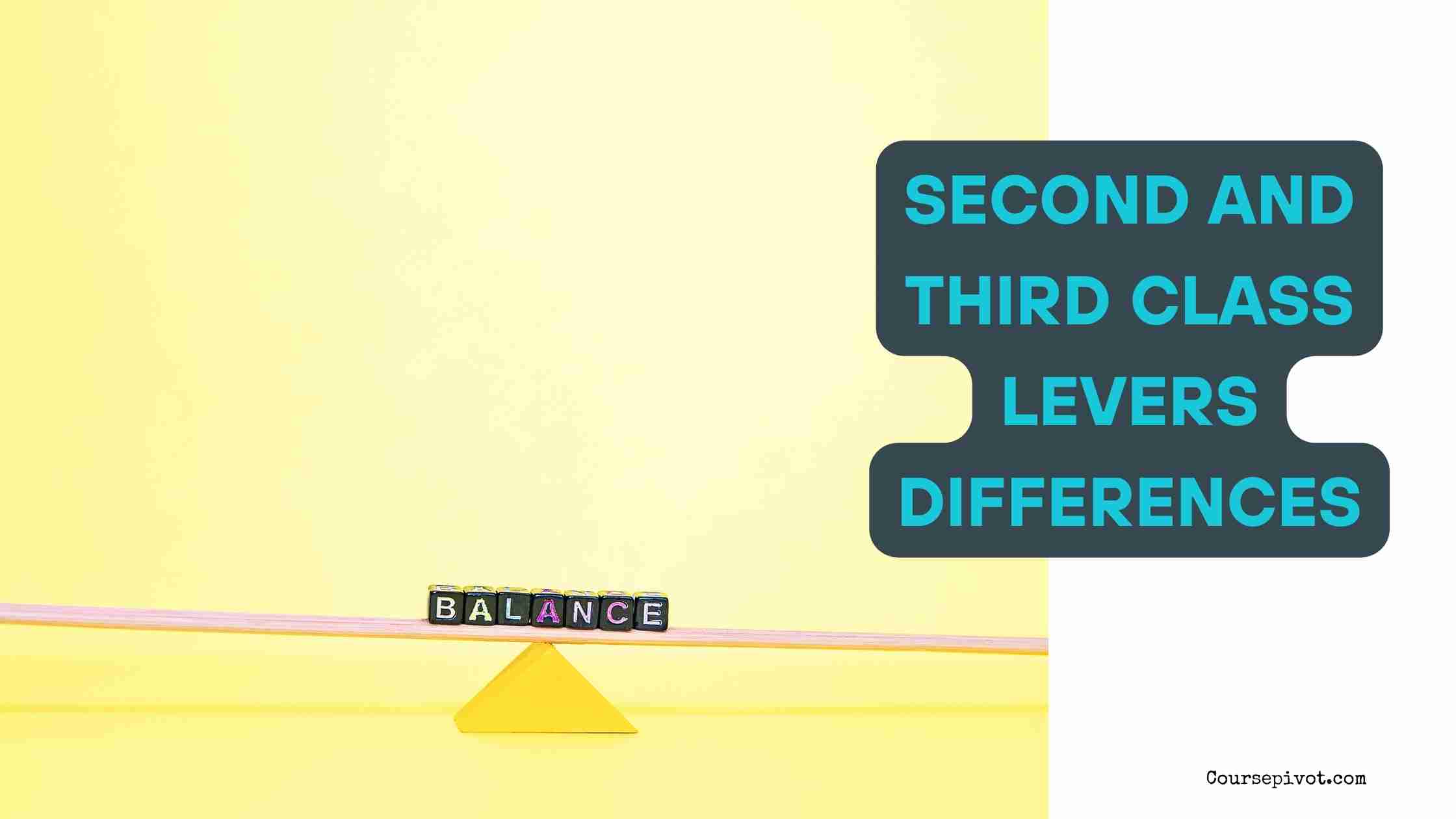
Explain What Distinguishes First Class Levers from Second and Third Class Levers
Levers are everywhere—in gym equipment, scissors, wheelbarrows, even your own body. But if you’re wondering what really sets first class levers apart from second and third class levers, you’re asking the right question.
Understanding the difference between first class, second class, and third class levers helps explain how force, motion, and balance work—not just in physics, but in our daily lives.
Table of Contents
Let’s take a deeper dive into what distinguishes first class levers from second and third class levers, using easy explanations, practical examples, and clear comparisons.
🔧 What Is a Lever, Really?
A lever is a simple machine that helps move a load with less effort. It consists of:
- A fulcrum (pivot point)
- An effort (force you apply)
- A load (the object you’re moving)
The position of the fulcrum, effort, and load is what determines the lever class. That’s the key to understanding the differences.
What Is a First Class Lever?
A first class lever has the fulcrum placed between the effort and the load.
Think of a seesaw or a pair of scissors. One side gets pushed down (effort), the fulcrum pivots, and the other side lifts the load.
⚖️ Key Characteristics of First Class Levers:
- Fulcrum in the center
- Load on one side, effort on the other
- Can change the direction of force
- Offers balance or force advantage, depending on position
🔍 Examples:
- Seesaw
- Scissors
- Pliers
- Crowbar
- Neck joint (in the human body)
First class levers can either increase force or speed—depending on where the fulcrum sits.
What Is a Second Class Lever?
A second class lever places the load between the effort and the fulcrum.
Imagine a wheelbarrow: You lift the handles (effort), the wheel acts as the fulcrum, and the load sits in between.
- Read our blog on Why a Seesaw Is Closest in Arrangement to a First Class Lever
Key Characteristics of Second Class Levers:
- Fulcrum at one end
- Load in the middle
- Effort at the opposite end
- Increases force, but does not change direction
🔍 Examples:
- Wheelbarrow
- Nutcracker
- Bottle opener
- Standing on tiptoes (ankle = fulcrum)
Second class levers offer a mechanical advantage—you use less force to lift a heavier load.
What Is a Third Class Lever?
Now here’s the interesting one—a third class lever places the effort between the load and the fulcrum.
This is the most common type of lever in the human body. Think of a bicep curl: Your elbow is the fulcrum, the bicep applies effort in the middle, and the hand (holding the weight) is the load.
⚡ Key Characteristics of Third Class Levers:
- Fulcrum at one end
- Effort in the middle
- Load at the opposite end
- Increases speed and range of motion, not force
Examples:
- Tweezers
- Fishing rod
- Bicep muscle in the arm
- Stapler
- Baseball bat
Third class levers require more force but allow for faster and wider movements.
Summary Comparison of Lever Classes
| Lever Class | Fulcrum Position | Effort Position | Load Position | Mechanical Advantage | Common Use |
|---|---|---|---|---|---|
| First Class | Center | One end | Opposite end | Varies (force or speed) | Seesaw, scissors |
| Second Class | One end | Opposite end | Center | Increases force | Wheelbarrow |
| Third Class | One end | Center | Opposite end | Increases speed/motion | Bicep, tweezers |
Why Does This Matter?
Because once you understand what distinguishes first class levers from second and third class levers, you start to recognize how your body, tools, and machines function more efficiently.
Whether you’re lifting weights at the gym, opening a soda, or carrying groceries, you’re using levers—consciously or not.
The placement of the fulcrum, load, and effort completely changes how force is applied, what direction movement takes, and how efficiently the task is done.
My Answer
So, what distinguishes first class levers from second and third class levers?
The key difference lies in the position of the fulcrum:
- In first class levers, the fulcrum is in the middle, allowing a balance between force and motion.
- In second class levers, the load is in the middle, giving you a force advantage.
- In third class levers, the effort is in the middle, favoring speed and movement over strength.
Understanding this not only explains how simple machines work—it also helps you appreciate the complex mechanics behind everyday actions.
Cite this article
You can copy and paste your preferred citation format below.
Martin, L. & Arquette, E.. (2025, May 23). Explain What Distinguishes First Class Levers from Second and Third Class Levers. Coursepivot.com. https://coursepivot.com/blog/explain-what-distinguishes-first-class-levers-from-second-and-third-class-levers/


